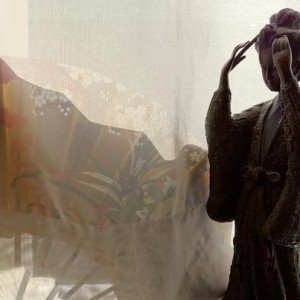Friday
Featured StoriesThe Three Basic Goodnesses
This fall, over forty Shambhala Centers and Groups all over the world are involved with the pilot phase of the new Basic Goodness Series. This is a series of three six-week courses that will enrich our basic entrance curriculum called The Way of Shambhala. Altogether they offer a three-part journey into the view and understanding of the core Shambhala teachings on basic goodness and enlightened society. Each is referred to with a question and a particular basic goodness. We have: Who Am I? The Basic Goodness of Humanity, How Can I Help? The Basic Goodness of Society, and What Is Real? The Basic Goodness of Reality.
These three ‘basic goodnesses’ are introduced at the beginning of Sakyong Mipham Rinpoche’s most recent Treatise on Enlightened Society.
The first principle of Shambhala is that everyone has a primordial nature of goodness. Humanity is basically good. We are all here because we have a beating heart. With a beating heart, you can have good days and bad days but at least you have a day. This beating heart of humanity is goodness, in the sense that it allows for all possibilities. Such goodness is basic; it is as ordinary, simple, and inherent as our humanity. Enlightenment means completely waking up this beating heart. (p. 8)
According to the Shambhala tradition, basic goodness is not only the nature of individual human beings. The teaching on enlightened society within Shambhala is that society itself is the natural arising of the energy, communication, and kindness of basic goodness. Therefore we do not need to fabricate an enlightened society. We are not contorting human principles to convince ourselves of enlightened society. The reason for enlightened society is the basic goodness of society itself. By acknowledging the awakened, living energy of everything, we are able to see that society is the natural expression of that goodness. (p. 10)
In the Shambhala tradition, goodness is not simply communication between humans; it is also communication with the elements and all living beings. This is known as drala. From the enlightened society perspective, drala is the natural communication that is happening in our environment. Therefore, drala is natural enlightened society. The sun shining, the snow falling, the tree growing, the birds signing, and the wind blowing are the natural and innate wish to communicate. In this light, the world is alive. This is energy itself. It is power. That natural communication is movement. That movement is “the Way.” It is the inherent strength of nature. The dance between the elements and our perceptions is a dance between the masculine and feminine principles. That is enlightened society the pure, clean communication of the living world. (p. 13)
For most of us these teachings might be inspiring and fascinating but at the same time quite challenging. Opening ourselves to them is a personal and interpersonal journey of looking at our experience and tuning into this basic goodness energy. These three courses are meant to be a group process exploring exactly that. Although they serve the larger purpose of introducing people to the Shambhala and Buddhist worldviews, they are designed to create ‘learning communities’ where people of any background, with or without previous meditation experience, can come together and reflect on their own experience and their world. So these courses are meant to be welcoming for new students as well as nourishing for more experienced meditators. In the introduction to the teacher’s manual, it says:
We could think of these learning communities as offering a service for our cities and regions. In a speedy world where there is little space for reflection, when our time is supposed to be “practical” and “productive,” we are creating the conditions for people to come together, look deeply and patiently, and have a unique kind of conversation that is difficult to have in most contexts.
The syllabus and manuals for these courses are written by Kalapa Acharya Adam Lobel working in close connection with the Sakyong. The responsibility of this pilot project has been handed out mainly to the shastris, who can teach these courses locally and work with other senior teachers. A few acharyas are also involved. Acharya Lobel has recorded the six talks and instructions of the first course and this is also available through Shambhala Online. At this point, the participating centers and groups have completed or are still offering this first course.
The feedback component of this pilot phase uses a computer network to invite the teachers to report and share their experience, as well as what has been expressed by the participants. What comes out for now is that the groups include mainly participants who have done other classes before, from a few to being quite advanced in the curriculum, but also some completely new people. The overall process seems to work quite well. Basically, it is a six-week literal contemplation journey of the question “Who Am I?” This is done within the gentle and precise space of meditation practice and through dialogue exercises. Some basic Buddhist teachings on the development of self through the “five skandhas” and on the “foundations of mindfulness” are offered as reference point and support.
~~
View this nine-minute video presentation of the whole Basic Goodness Series by Acharya
Lobel: http://www.shambhalaonline.org/archives/103230.mov
Passages from Treatise on Enlightened Society are reprinted by arrangement with the publisher, www.shambhalamedia.org.

















